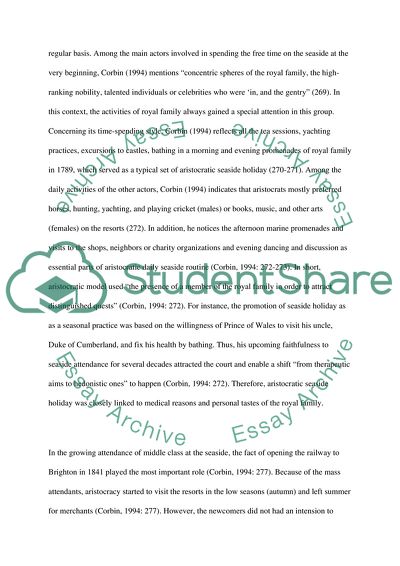Cite this document
(Seaside Resorts and Cultures of Tourism Literature review Example | Topics and Well Written Essays - 2500 words, n.d.)
Seaside Resorts and Cultures of Tourism Literature review Example | Topics and Well Written Essays - 2500 words. https://studentshare.org/tourism/1873391-6-discuss-the-development-and-popularity-of-the-seaside-holiday-during-the-course-of-the-nineteenth-century
Seaside Resorts and Cultures of Tourism Literature review Example | Topics and Well Written Essays - 2500 words. https://studentshare.org/tourism/1873391-6-discuss-the-development-and-popularity-of-the-seaside-holiday-during-the-course-of-the-nineteenth-century
(Seaside Resorts and Cultures of Tourism Literature Review Example | Topics and Well Written Essays - 2500 Words)
Seaside Resorts and Cultures of Tourism Literature Review Example | Topics and Well Written Essays - 2500 Words. https://studentshare.org/tourism/1873391-6-discuss-the-development-and-popularity-of-the-seaside-holiday-during-the-course-of-the-nineteenth-century.
Seaside Resorts and Cultures of Tourism Literature Review Example | Topics and Well Written Essays - 2500 Words. https://studentshare.org/tourism/1873391-6-discuss-the-development-and-popularity-of-the-seaside-holiday-during-the-course-of-the-nineteenth-century.
“Seaside Resorts and Cultures of Tourism Literature Review Example | Topics and Well Written Essays - 2500 Words”. https://studentshare.org/tourism/1873391-6-discuss-the-development-and-popularity-of-the-seaside-holiday-during-the-course-of-the-nineteenth-century.


